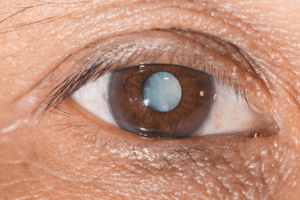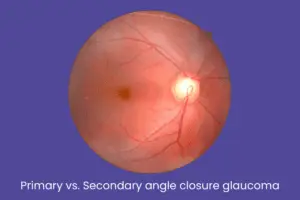Different types of glaucoma procedures: A complete guide

Glaucoma is a group of eye diseases that damage the optic nerve, often due to high intraocular pressure (IOP). It is one of the leading causes of irreversible blindness worldwide. While early stages can be managed with medications, many patients eventually require laser or surgical procedures to protect their vision.
This comprehensive guide explains the various glaucoma procedures available, helping patients, caregivers, and readers understand their options better and make informed decisions.
Table of Contents
ToggleWhy are glaucoma procedures necessary?
Glaucoma procedures aim to:
- Reduce intraocular pressure (IOP).
- Prevent further damage to the optic nerve.
- Preserve existing vision.
- Provide long-term disease management when medications are insufficient.
The procedures can be broadly classified into laser treatments, traditional surgeries, and minimally invasive glaucoma surgeries (MIGS).
Types of glaucoma procedures
1. Laser procedures for glaucoma
Laser treatments are usually outpatient, minimally invasive, and suitable for early to moderate stages of glaucoma.
a. Selective Laser Trabeculoplasty (SLT)
- Suitable for open-angle glaucoma.
- Uses a laser to stimulate the eye’s drainage tissue, improving fluid outflow.
- Can be repeated and often used as a first-line alternative to drops.
b. Argon Laser Trabeculoplasty (ALT)
- Also for open-angle glaucoma.
- Uses thermal energy to enhance fluid drainage.
- Less commonly used today in favor of SLT.
c. Laser Peripheral Iridotomy (LPI)
- Used for angle-closure glaucoma.
- Creates a small opening in the iris to relieve pressure buildup.
d. Cyclophotocoagulation (CPC)
- Used for advanced or uncontrolled glaucoma.
- Targets the ciliary body (fluid-producing part of the eye) to reduce fluid production.
- Types include traditional CPC and micropulse CPC (gentler approach).
2. Traditional (Incisional) glaucoma surgeries
When laser or medication-based treatments are no longer effective, surgical procedures offer more sustained pressure control.
a. Trabeculectomy
- Creates a new drainage passage under the eyelid to release fluid from the eye.
- Often recommended for moderate to severe open-angle glaucoma.
- Offers effective long-term pressure reduction.
b. Glaucoma drainage implants (Shunts)
- Includes devices like the Ahmed or Baerveldt valve.
- A tube is inserted into the eye, directing fluid to a reservoir under the conjunctiva.
- Suitable for complex or previously treated cases.
3. Minimally Invasive Glaucoma Surgery (MIGS)
MIGS procedures are less invasive, with quicker recovery and fewer complications, ideal for patients with mild to moderate glaucoma.
a. iStent / Hydrus microstent
- Tiny implants inserted into the eye’s drainage system.
- Often combined with cataract surgery.
b. Kahook dual blade / Trabectome
- Removes part of the trabecular meshwork to improve fluid outflow.
- Quick recovery and minimal tissue disruption.
c. XEN gel stent
- A soft, tube-like implant that creates a new outflow path for fluid.
- Provides controlled and sustained pressure relief.
Choosing the right glaucoma procedure
Selecting the most appropriate procedure depends on:
- The type of glaucoma (open-angle, angle-closure, secondary, etc.).
- The severity of the disease.
- The patient’s age, eye condition, and lifestyle.
- Previous treatment history and response.
- The ophthalmologist’s recommendation.
A thorough evaluation by a glaucoma specialist is essential to determine the right course of action.
Conclusion
Glaucoma procedures have advanced significantly, offering patients multiple options to manage this sight-threatening condition. From outpatient laser treatments to minimally invasive and traditional surgeries, the choice depends on each individual’s medical profile.
If you or someone you know is facing glaucoma and needs clarity on treatment options, Krisha Eye Hospital in Ahmedabad offers comprehensive evaluations and advanced glaucoma care tailored to individual needs.
Book your consultation today to take the next step in preserving your vision.
Author bio
Dr. Dhwani Maheshwari, an esteemed ophthalmologist with over 10 years of experience, leads Krisha Eye hospital in Ahmedabad with a commitment to advanced, patient-centered eye care. Specializing in cataract and refractive surgery, Dr. Maheshwari has performed more than a thousand successful surgeries. Her expertise lies in phacoemulsification, a technique recognized for its precision in cataract treatment.
Dr. Maheshwari’s educational journey includes an MBBS from Smt. NHL MMC, a DOMS from M & J Institute of Ophthalmology, and a DNB in Ophthalmology from Mahatme Eye Bank Eye Hospital, Nagpur. She also completed a fellowship in phacoemulsification at Porecha Blindness Trust Hospital, further enhancing her surgical skills. In addition to her work at Krisha Eye Hospital, Dr. Maheshwari serves as a consultant ophthalmologist at Northstar Diagnostic Centre.
Under her leadership, Krisha Eye Hospital aims to bring all superspecialties under one roof, offering comprehensive eye care solutions for all vision needs.
FAQs
There is no one-size-fits-all answer. The most effective procedure depends on the type and severity of glaucoma, and the patient’s unique eye health. Trabeculectomy is highly effective for advanced cases, while MIGS offers a safer option for earlier stages.
Most glaucoma procedures are performed under local anesthesia, making them relatively painless. Mild discomfort may be experienced during recovery.
Recovery times vary by procedure. Laser treatments like SLT require little to no downtime, while surgeries like trabeculectomy may require several weeks for full recovery.
Surgery controls but does not cure glaucoma. Intraocular pressure may rise again over time, requiring additional procedures or ongoing treatment.
MIGS is best for patients with mild to moderate open-angle glaucoma. Those with severe or complex glaucoma may need more traditional surgical options.




